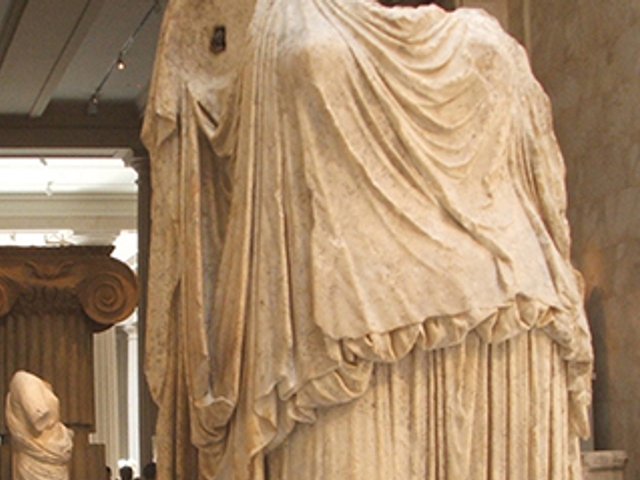Power and Pathos: Bronze Sculpture of the Hellenistic World was created to be both the accompanying text for the exhibition of the same title and its long-lasting legacy. A major event for the world of ancient Greek and Roman art, this remarkable exhibition brought together more than 50 fine bronzes, most of them large-scale and many of them strikingly juxtaposed for the first time. All the works demonstrate the extraordinary vision, as well as the skills and virtuosity of the Hellenistic artists and craftsmen who made them. They lived in an age that looked beyond the idealisation of the human form to find the lived experience—the pathos—of the figures they created.
Each sculpture is also a poignant reminder of what we have lost. Some, such as the Terme Boxer, are very famous; others, including a number of works from Greek and Italian collections, are less well known. Many seem to us to be masterpieces, yet we know that they represent only a small fraction of the thousands of bronze sculptures produced in antiquity. Random factors, often shipwrecks, have ensured their semi-miraculous survival. The curators of the exhibition, Jens Daehner and Kenneth Lapatin, had to borrow from 34 museums across the world to bring together this number of Hellenistic bronzes. They make the point in their essay, the first in this volume, that most are seen in relative or complete isolation in their home institutions. The ability to compare and contrast afforded by both the show itself and by this volume, not least because of the extraordinarily high-quality photography, has allowed significant new insights, as well as provided a magnificent visual feast.
These insights are explored in the 11 essays that form the first half of the book. Carefully commissioned to cover a full range of topics from the technical to the aesthetic, each is written by an acknowledged expert and the spacious format allows them to treat their subject matter in considerable depth. A refreshing tone is set by Daehner and Lapatin, who question received wisdom with an almost Socrates-like profession of ignorance. Bronze versus marble, “originals” versus “copies”, attributions to named sculptors, problems of dating—all come in for deft and challenging scrutiny. Their fellow authors pick up the themes in a similar spirit. Naturally their coverage is not limited to the specific pieces included in the exhibition. Other sculptures are both illustrated and discussed. The result is a series of essays that, taken together, give a valuable overview of the current state of scholarship on Hellenistic bronzes, and present this as a vibrant field for research. Students of the Classical world will find these essays invaluable, while readers with a more general interest will find them approachable, clear and engagingly written.
The second part of the volume consists of catalogue entries grouping the sculptures into six themes: images of rulers, bodies ideal and extreme, the new realism of the divine, likeness and expression, Apoxyomenos and the art of replication, and retrospective styles. Again, ample space is provided for detailed descriptions of each sculpture, a full commentary and an individual bibliography. The entries are written by a number of different authors, but thanks to exemplary editing, a consistency of tone and approach is maintained.
Power and Pathos was shown in three venues, and audiences in the Palazzo Strozzi in Florence, the Getty Centre in Los Angeles and currently at the National Gallery of Art in Washington, DC (until 13 March) have received it with warm enthu <br>siasm and critical acclaim. Yet it is the curator’s lot to feel that, after all the years of preparation, time accelerates cruelly during the run of a special exhibition, giving little leisure for contemplation of what has been achieved. This is where the book takes centre stage, as an enduring record of an experience that could only be fleeting, for curators and audiences alike. This volume plays its role admirably. Intelligently written, beautifully produced and with excellent photographs that do full justice to the sculptures they illustrate, it is itself a fine artefact, and one that should be valued for many years to come.
• J. Lesley Fitton has been the keeper of the Department of Greece and Rome at the British Museum since 2007, having previously been the curator of the Greek Bronze Age collections. Her current research interests include the reception of the ancient world and the polychromy of Classical sculpture
Power and Pathos: Bronze
Sculpture of the Hellenistic World
Jens M. Daehner and Kenneth Lapatin, eds
Getty Publications, 368pp, $65 (hb)



